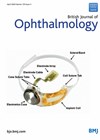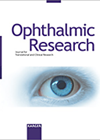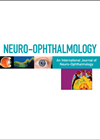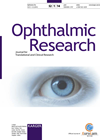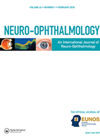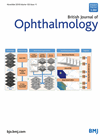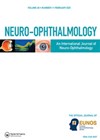You searched for "intravenous"
What are the characteristics of patients reporting diplopia in giant cell arteritis?
4 December 2024
| Lauren R Hepworth
|
EYE - Neuro-ophthalmology
The authors present a retrospective study of individuals diagnosed with giant cell arteritis (GCA) consecutively over a six-year period at a single tertiary ophthalmic centre. The characteristics of binocular diplopia prior to GCA diagnosis was collected from medical records and...
A prospective trial of adjuvant therapy for high-risk melanoma
Patients diagnosed with iris, ciliary body or choroidal melanoma of high-risk tumour cytogenetics (monosomy 3>/= 20% of cells), were treated with adjuvant low-dose dacarbacine (DTIC) and interferon –alpha-2b (IFNA-2b), following primary treatment (enucleation, brachytherapy or resection). DTIC was given intravenously...Cytotoxic effect of voriconazole on human corneal epithelial cells
Voriconazole is a second-generation synthetic derivative of fluconazole with broadened antifungal spectrum. It is becoming the drug of choice for fungal keratitis. Voriconazole eye drops are not available commercially, thus have to be prepared by diluting the intravenous formulation containing...A case series of acute visual loss following excessive alcohol and / or drug use
1 August 2015
| Claire Howard
|
EYE - Neuro-ophthalmology
|
Ophthalmoplegia, retinal artery occlusion, saturday night retinopathy
This study presents three cases of so called Saturday night retinopathy, an acute visual loss following intravenous drug abuse and stupor, leading to continuous pressure on the orbit while asleep. All three cases presented with acute vision loss and had...
Effect of voriconazole of vision of healthy volunteers
1 December 2014
| Bheemanagouda Patil
|
EYE - Vitreo-Retinal
Voriconazole is a broad spectrum, triazole antifungal agent used for systemic fungal infections. It has a favourable safety profile and is available in both intravenous and oral forms. The commonest adverse drug reactions with voriconazole are changes in visual perception,...
An atypical presentation of Vogt-Koyanagi-Harada Disease
1 August 2018
| Claire Howard
|
EYE - Neuro-ophthalmology
|
Indocyanine green angiography, neuroretinitis, optical coherence tomography, Vogt-Koyanagi-Harada disease
The authors present a single case of atypical presentation of Vogt-Koyanagi-Harada disease. A 42-year-old female presented with unilateral visual loss associated with systemic symptoms of fever and headache. Initial ophthalmic examination revealed a unilateral neuroretinitis, however, investigations for infectious and...
Overview of traumatic optic neuropathy
1 August 2018
| Claire Howard
|
EYE - Neuro-ophthalmology
|
Intracranial injury, methylprednisolone, oral steroids, traumatic optic neuropathy, visual outcome
The authors present the clinical features and role of various treatment modalities on the final vision outcome in traumatic optic neuropathy (TON). They retrospectively reviewed the records of patients with a diagnosis of TON over a four year period in...
A case report of Horner syndrome with neuromyelitis optica
1 August 2014
| Claire Howard
|
EYE - Neuro-ophthalmology
This case report details a patient diagnosed with neuromyelitis optica (NMO) with an associated left Horner syndrome. The female patient presented with neck pain and right hemibody decreased pain and temperature sensation. She then went on to develop left ptosis...
Low dose steroids with elevated IgG4 levels
This is a retrospective case series review of 28 biopsy-proven IgG4-related ophthalmic disease (ROD) patients treated between March 2010 – January 2017 from Seoul, Korea. The mean follow-up period was 27.3 months. Lacrimal glands were involved in all patients and...Complications with porous orbital implant after enucleation in retinoblastoma patients
1 April 2019
| Rina Bhatt
|
EYE - Orbit
This is a retrospective, case control study aimed to identify risk factors associated with complications in retinoblastoma patients following primary and secondary enucleations with porous implant placements. Patients with retinoblastoma who underwent enucleation with porous orbital implant placement between January...
A survey of neuro-ophthalmologists on use of corticosteroids in giant cell arteritis
1 December 2021
| Claire Howard
|
EYE - Neuro-ophthalmology
|
Giant Cell Arteritis, corticosteroid, dosage, vasculitis, vision Loss
While corticosteroids are the mainstay of treatment in giant cell arteritis (GCA), the type, dose, route and duration of treatment remains controversial. The authors surveyed 180 neuro-ophthalmologists on their use of this treatment via email in a two-month period. Results...


